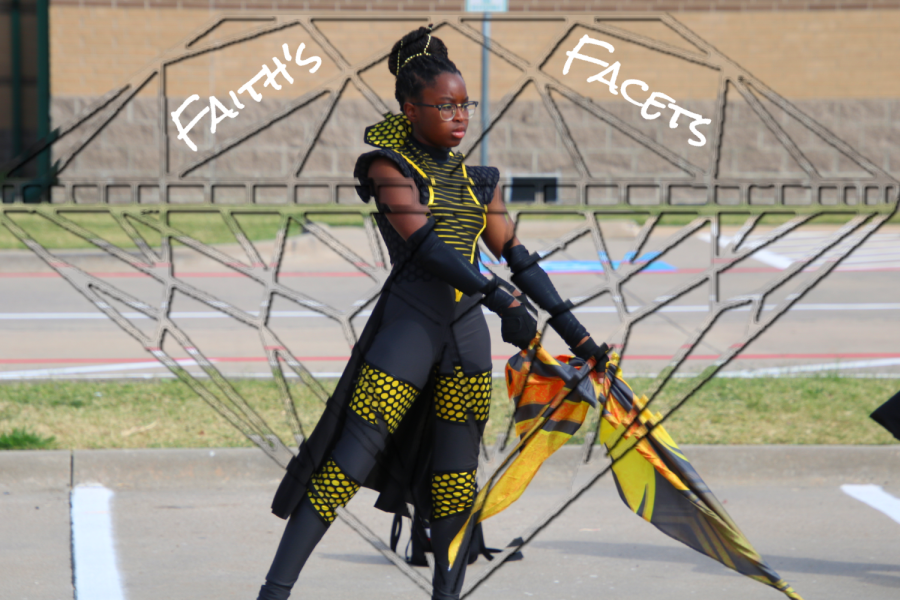Facets of Faith: seeing color
Managing editor Faith Brocke expresses their emotions and experiences in their column, Facets of Faith.
April 6, 2023
Growing up, I didn’t watch a lot of Black-centric cartoons. It was mostly white protagonists, and if there were characters of color, they were usually non-black.
For a very long time, I had never seen a black main character that wasn’t pushed to the side, treated as comedic relief, or as more of a plot device than an actual character with an existence that went deeper than the surface.
And I wouldn’t say that this had a negative impact on me—I’ve always felt pretty connected to Black culture and being Ghanaian-American—but it also meant that I rarely saw anyone who looked like me and faced the same struggles I did in 2D.
Beyond Tiana from The Princess and The Frog and Layla from Winx Club, I can’t remember any black protagonists I was completely obsessed with. And even now, I wonder: was I obsessed with them because they were as amazing as I remember or because they were all I had?
There were characters like Monique from Kim Possible who were definitely there, but that’s about it. She was just…there. I never felt much of a connection to her because there was nothing to connect to.
It’s amazing that I could live in a time where I could even see any Black representation on screen, but such small doses of seemingly unimportant characters aren’t the same.
It never really occurred to me until recently when I was looking into new cartoons on my watch list and was able to smile at Moon Girl and Devil Dinosaur and Craig of the Creek, as well as the two newest Teenage Mutant Ninja Turtle adaptations that feature April O’Neil as a black girl (Rise of the Teenage Mutant Ninja Turtles TMNT: Mutant Mayhem).
These are cartoons and versions of characters I wasn’t able to grow up with. These series and adaptations showcase so much Black culture, from hair expression to food to Black history to AAVE usage.
These topics usually go unsaid or unutilized in plot or characters arcs and development, and seeing them incorporated filled me with this indescribable emotion, somewhere between pride and happiness. I get to see characters talk about poverty and crime in predominantly Black areas, experiences with microaggressions, and the disconnect between Black experiences and non-black ones.
It’s something that makes me feel warm and fuzzy. I want kids in future generations to be able to feel the way I do when I see creators go above and beyond to capture what it’s like to be Black, even if it’s just a cartoon. Being able to see yourself in a character, from skin tone to how they talk or style their hair, helps you feel less alone and grasp the world around you so much better than without that experience.
I want to be able to create stories that present a myriad of Black experiences and represent our rich culture, and seeing it before my very eyes is the first step in that direction.
I’m forever grateful that shows like these are front and center on networks like Disney, Nickelodeon, and Cartoon Network. I hope that never changes.







